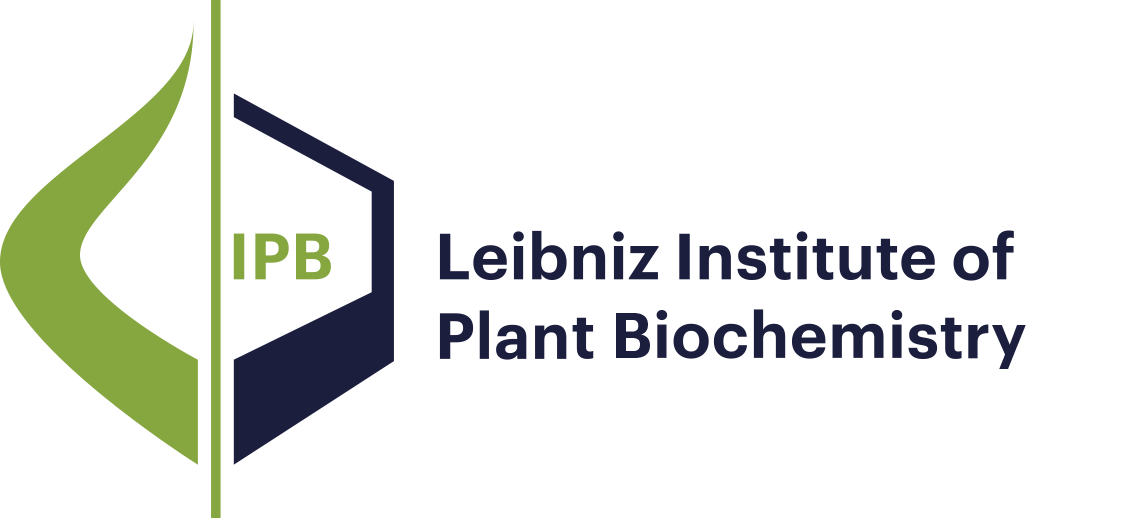- Results as:
- Print view
- Endnote (RIS)
- BibTeX
- Table: CSV | HTML
Publications
Publications
Publications
Publications
Publications
Research Mission and Profile
Molecular Signal Processing
Bioorganic Chemistry
Biochemistry of Plant Interactions
Cell and Metabolic Biology
Independent Junior Research Groups
Program Center MetaCom
Publications
Good Scientific Practice
Research Funding
Networks and Collaborative Projects
Symposia and Colloquia
Alumni Research Groups
Publications
Cytochrome P450s are versatile catalysts for biosynthesis applications. In the P450 catalytic cycle, two electrons are required to reduce the heme iron and activate the subsequent reductions through proposed electron transfer pathways (eTPs), which often represent the rate-limiting step in reactions. Herein, the P450 BM3 from Bacillus megaterium was engineered for improved catalytic performance by redesigning proposed eTPs. By introducing aromatic amino acids on eTPs of P450 BM3, the “best” variant P2H02 (A399Y/Q403F) showed 13.9-fold improved catalytic efficiency (kcat/KM = 913.5 L mol−1 s−1) compared with P450 BM3 WT (kcat/KM = 65.8 L mol−1 s−1). Molecular dynamics simulations and electron hopping pathways analysis revealed that aromatic amino acid substitutions bridging the cofactor flavin mononucleotide and heme iron could increase electron transfer rates and improve catalytic performance. Moreover, the introduction of tyrosines showed positive effects on catalytic efficiency by potentially protecting P450 from oxidative damage. In essence, engineering of eTPs by aromatic amino acid substitutions represents a powerful approach to design catalytically efficient P450s (such as CYP116B3) and could be expanded to other oxidoreductases relying on long-range electron transfer pathways.
Publications
The combinatorial complexity of the protein sequence space presents a significant challenge for recombination experiments targeting beneficial positions. To overcome these difficulties, a machine learning (ML) approach was employed, which was trained on a limited literature dataset and combined with iterative generation and experimental data implementation. The PyPEF method was utilized to identify existing variants and predict recombinant variants targeting the substrate channel of P450 CYP116B3. Through molecular dynamics simulations, eight multiple-substituted improved variants were successfully validated. Specifically, the RMSF of variant A86T/T91H/M108S/A109M/T111P was decreased from 3.06 Å (wild type) to 1.07 Å. Additionally, the average RMSF of the variant A86T/T91P/M108V/A109M/T111P decreased to 1.41 Å, compared to the wild type’s 1.53 Å. Of particular significance was the prediction that the variant A86T/T91H/M108G/A109M/T111P exhibited an activity approximately 15 times higher than that of the wild type. Furthermore, during the selection of the regression model, PLS and MLP regressions were compared. The effect of data size and data relevance on the two regression approaches has been summarized. The aforementioned conclusions provide evidence for the feasibility of the strategy that combines ML with experimental approaches. This integrated strategy proves effective in exploring potential variations within the protein sequence space. Furthermore, this method facilitates a deeper understanding of the substrate channel in P450 CYP116B3.
Publications
Cytochrome P450s are heme-thiolate enzymes that have been broadly applied in pharmaceutical and biosynthesis because of their efficient oxidation at inert carbons. Extensive engineering campaigns are applied to P450s to explore new non-natural substrates and reactions; however, achieving high coupling efficiency is one of the main challenges. The undesirable uncoupling reactions result in the extra consumption of expensive cofactor NAD(P)H, and lead to the accumulation of reactive oxygen species and the inactivation of enzymes and organisms. Using protein engineering methods, these limitations can be overcome by engineering and fine-tuning P450s. A systemic perspective of the enzyme structure and the catalytic mechanism is essential for P450 engineering campaigns for higher coupling efficiency. This review provide an overview on factors contributing to uncoupling and protein engineering approaches to minimize uncoupling and thereby generating efficient and robust P450s for industrials use. Contributing uncoupling factors are classified into three main groups: i) substrate binding pocket; ii) ligand access tunnel(s); and iii) electron transfer pathway(s). Finally, we draw future directions for combinations of effective state-of-the-art technologies and available software/online tools for P450s engineering campaigns.
Publications
Cytochrome P450s has gained the great interest for their broad substrate scope in the catalysis of oxidation reactions for pharmaceuticals, plastics, and hormones. However, achieving high coupling efficiency by the engineering of P450s is still a big challenge.The presence of extra water around the active site is deemed to be related touncoupling. Herein, we engineered the access tunnels of P450 BM3 from Bacillus megaterium to control water access from bulk solvent to the active site. Nine residues located in tunnels were investigated bysite saturationmutagenesisto reduce the water diffusion,therefore,improvingthe coupling efficiency. Finally, the recombinedvariant N319L/T411V/T436A showed improved coupling efficiency (from 31.2% to 52.6%). Tunnel polarity analysis and MD simulation further proved that reduced water moleculesaround the active site lead to higher coupling efficiency. Overall, our research provides valuable insight on improved coupling efficiency by controlling water diffusion through tunnel engineering.
Publications
In recent years, the engineering of flexible loops to improve enzyme properties has gained attention in biocatalysis. Herein, we report a loop engineering strategy to improve the stability of the substrate access tunnels, which reveals the molecular mechanism between loops and tunnels. Based on the dynamic tunnel analysis of CYP116B3, five positions (A86, T91, M108, A109, T111) in loops B-B′ and B′-C potentially affecting tunnel frequent occurrence were selected and subjected to simultaneous saturation mutagenesis. The best variant 8G8 (A86T/T91L/M108N/A109M/T111A) for the dealkylation of 7-ethoxycoumarin and the hydroxylation of naphthalene was identified with considerably increased activity (134-fold and 9-fold) through screening. Molecular dynamics simulations showed that the reduced flexibility of loops B-B′ and B′-C was responsible for increasing the stability of the studied tunnel. The redesign of loops B-B′ and B′-C surrounding the tunnel entrance provides loop engineering with a powerful and likely general method to kick on/off the substrate/product transportation.

